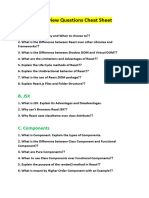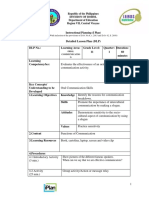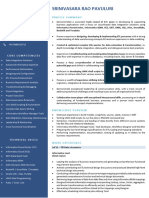0% found this document useful (0 votes)
50 views8 pagesReact
This document provides a comprehensive overview of beginner to advanced React interview questions and answers. It covers key concepts such as React, SPAs, JSX, components, props, state management, hooks, and more. Additionally, it explains advanced topics like Context API, HOCs, reconciliation, and the React rendering process.
Uploaded by
abhijeetsaxena615Copyright
© © All Rights Reserved
We take content rights seriously. If you suspect this is your content, claim it here.
Available Formats
Download as PDF, TXT or read online on Scribd
0% found this document useful (0 votes)
50 views8 pagesReact
This document provides a comprehensive overview of beginner to advanced React interview questions and answers. It covers key concepts such as React, SPAs, JSX, components, props, state management, hooks, and more. Additionally, it explains advanced topics like Context API, HOCs, reconciliation, and the React rendering process.
Uploaded by
abhijeetsaxena615Copyright
© © All Rights Reserved
We take content rights seriously. If you suspect this is your content, claim it here.
Available Formats
Download as PDF, TXT or read online on Scribd
/ 8



















































































